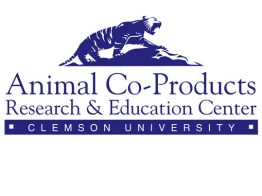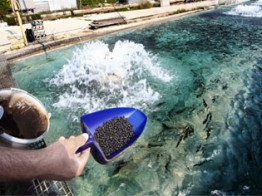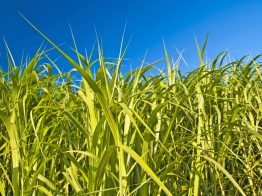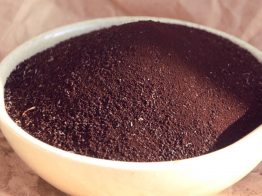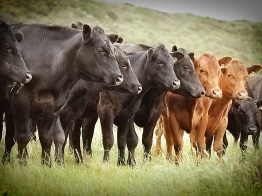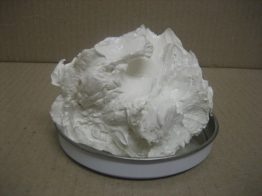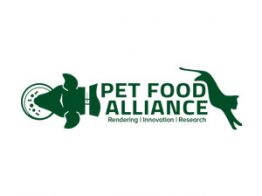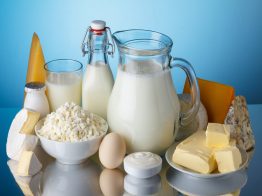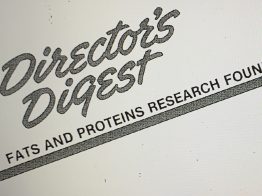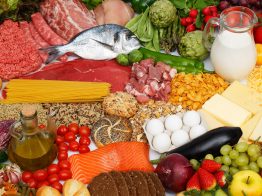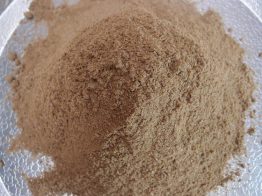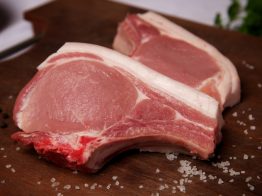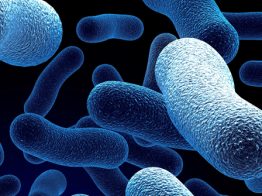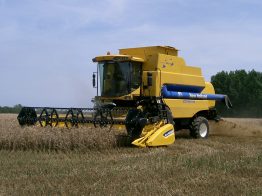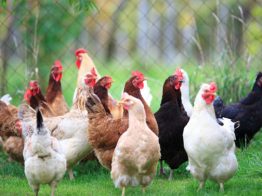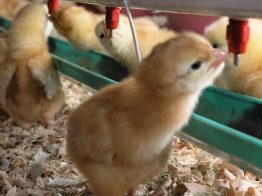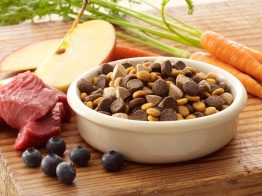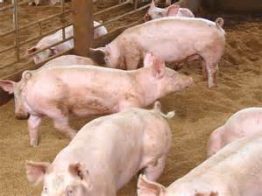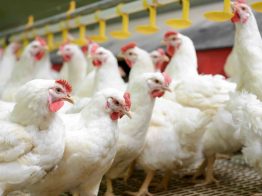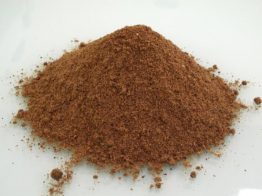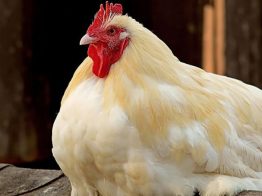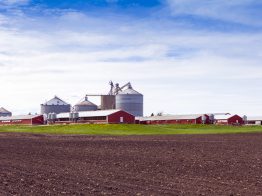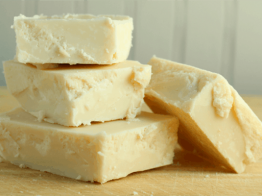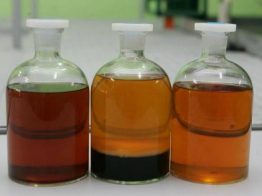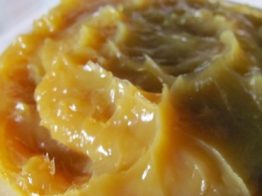Modules
Lorem Ipsum is simply dummy text of the printing and typesetting industry. Lorem Ipsum has been the industry’s standard dummy text ever since the 1500s, when an unknown printer took a galley of type and scrambled it to make a type specimen book. It has survived not only five centuries, but also the leap into electronic typesetting, remaining essentially unchanged. It was popularised in the 1960s with the release of Letraset sheets containing Lorem Ipsum passages, and more recently with desktop publishing software like Aldus PageMaker including versions of Lorem Ipsum.
Lorem ipsum dolor sit amet, consectetur adipiscing elit. Donec quis turpis neque. Suspendisse id dolor ante. Pellentesque vulputate arcu in nisi venenatis, id feugiat est mattis. Aliquam erat volutpat. Nulla id risus ante. Mauris sed nunc nec tellus sodales volutpat nec non dui. Vivamus quis orci dolor. Aliquam convallis mauris ex, vitae molestie diam tempor sit amet. Nam mollis mi in erat accumsan, eget gravida felis euismod. In eu massa gravida, accumsan nibh pellentesque, ullamcorper nisl. Vivamus aliquam felis in lobortis lacinia. Suspendisse sapien dolor, finibus ut mauris eu, congue vulputate quam. Vestibulum ac ligula non ante varius finibus. Mauris id neque purus. Mauris bibendum blandit arcu eleifend sagittis
Lorem ipsum dolor sit amet, consectetur adipiscing elit. Donec quis turpis neque. Suspendisse id dolor ante. Pellentesque vulputate arcu in nisi venenatis, id feugiat est mattis. Aliquam erat volutpat. Nulla id risus ante. Mauris sed nunc nec tellus sodales volutpat nec non dui. Vivamus quis orci dolor. Aliquam convallis mauris ex, vitae molestie diam tempor sit amet. Nam mollis mi in erat accumsan, eget gravida felis euismod. In eu massa gravida, accumsan nibh pellentesque, ullamcorper nisl. Vivamus aliquam felis in lobortis lacinia. Suspendisse sapien dolor, finibus ut mauris eu, congue vulputate quam. Vestibulum ac ligula non ante varius finibus. Mauris id neque purus. Mauris bibendum blandit arcu eleifend sagittis
Lorem ipsum dolor sit amet, consectetur adipiscing elit. Donec quis turpis neque. Suspendisse id dolor ante. Pellentesque vulputate arcu in nisi venenatis, id feugiat est mattis. Aliquam erat volutpat. Nulla id risus ante. Mauris sed nunc nec tellus sodales volutpat nec non dui. Vivamus quis orci dolor. Aliquam convallis mauris ex, vitae molestie diam tempor sit amet. Nam mollis mi in erat accumsan, eget gravida felis euismod. In eu massa gravida, accumsan nibh pellentesque, ullamcorper nisl. Vivamus aliquam felis in lobortis lacinia. Suspendisse sapien dolor, finibus ut mauris eu, congue vulputate quam. Vestibulum ac ligula non ante varius finibus. Mauris id neque purus. Mauris bibendum blandit arcu eleifend sagittis
Beer!
Bacon ipsum dolor amet biltong ball tip boudin bresaola flank. Strip steak pork loin sausage, short loin frankfurter beef beef ribs jowl rump doner tenderloin spare ribs.
Scales of Justice
Bacon ipsum dolor amet biltong ball tip boudin bresaola flank. Strip steak pork loin sausage, short loin frankfurter beef beef ribs jowl rump doner tenderloin spare ribs.
Recent Project Summaries
- Rendering Industry Thermal Validation White Paper
- ACREC
- Water Activity and Growth of Pathogenic Salmonella in Rendered Animal Products – Annel Greene – 2014
- Validation Of Thermal Destruction Of Bacteria And Viruses In Rendered Animal Products – Annel Greene – 2012
- Validation Of Thermal Destruction Of Avian Influenza Virus In Rendered Animal Products – Annel Greene – 2008
ACREC
The Animal Co-Products Research & Education Center (ACREC) is a joint project with Clemson University and FPRF with the mission to:
Ensure microbial safety of rendered products for animal feeds and consumer protection.
Promote environmentally sound practices.
Develop new market opportunities for the worldwide rendering industry.
Provide educational opportunities in animal co-product utilization.
Projects funded through ACREC represent wide diversity in different fields and areas of novel and innovative research.
Contact ACREC
Animal Co-Products Research and Education Center (ACREC)
247 Poole Agricultural Center
Clemson University
Clemson, SC 29634-0328
acrec-l@clemson.edu
Annel K. Greene, Ph.D., Center Director, agreene@clemson.edu
(864) 656-3123 Office
(864) 656-3131 FAX
Water Activity and Growth of Pathogenic Salmonella in Rendered Animal Products – Annel Greene – 2014
Validation Of Thermal Destruction Of Bacteria And Viruses In Rendered Animal Products – Annel Greene – 2012
Validation Of Thermal Destruction Of Avian Influenza Virus In Rendered Animal Products – Annel Greene – 2008
Validation of Thermal Death Time of Salmonella Species Rendering Materials – Annel Greene – 2014
Treatment Of Rendering Wastewater In Microbial Fuel Cells With Peroxide Production – Sudeep Popat – 2018
Thermal Validation Of Rendering Cookers Via Remote Sensing – Annel Greene – 2009
Thermal Death Time of Salmonella Species in Beef and Poultry Rendering Materials – Annel Greene – 2014
The Use Of Three Phase Reaction For Biodiesel Production – John G Goodwin – 2006
Solvent Extraction of Oils from DAF Sludge and Reuse of Recovered Flocculant – Christopher Kitchens – 2017
Separation and evaluation of supramammary lymph node proteins – Thomas R Scott – 2012 – 3 projects in one report
Self-Healing Rendered Protein Based Thermosets For High-Value Automotive Applications – Srikanth Pilla – 2017
Screening Bioactive Peptides from Animal By-product Proteins – Feng Chen – 2006
Salmonella-specific bacteriophages- characterization and optimization of production- Xiuping Jiang – 2012
Rendering Co-Products As Electron Donors For Subsurface Remediation, A new market – Kevin Finneran – 2018
Renderable Flocculants For Wastewater Treatment, 2 – Vladimir Reukov and Alexey Vertegel – 2018
Renderable Flocculants For Wastewater Treatment – Vladimir Reukov and Alexey Vertegel – 2018
Preparation of Environmentally-Friendly (Green) Polymers from Animal Fat – AB Bodine – Sept 2007
Plastics and polymer blends from proteins produced by animal co-product industry – Igor Luzinov – 2006
Phase 2- Waste Bin Liner Development – R Andrew Hurley – 2013
Phase 2- Economic Separation Of Fat Components From Rendered Materials Using CO2- Christopher Kitchens – 2013
Optimization And Initial Bioprocess Scaleup Of Omega-3 Production From Rendered Fat – Mark Blenner – 2019
Modified Natural Materials for Rendering Applications, 2 – Daniel Whitehead – 2019
Modified Natural Materials for Rendering Applications – Daniel Whitehead – 2018
Low-Energy Process For Concentration Of Stick Water – Scott Husson – 2016
Life Cycle Assessment of Rendering and Rendered Products – Charles Gooding – 2013
Lactide Nanoparticles For The Remediation Of Rendering Malodorants – Daniel Whitehead – 2017
High Value Products From Rendered Fats, Oils, And Greases- Process Design And Analysis Of Profitability – Charles Gooding – 2011
High Value Products from Rendered Fat – Charles Gooding – 2012
Fouling-Resistant Membranes For Additive-Free Treatment Of Rendering Facility Wastewater – Scott Husson – 2013
Extrusion and Molding of Proteins Fractions and Fats Derived from Animal By-Products – Amod Ogale – Sept 2005
Extrusion and Molding of Animal Co-Product Based MBM Biopolymers – Amod Ogale – 2013
Extrusion & Molding of Animal Coproduct-based Proteins for Geostructural Application – Amod Ogale – 2006
Engineering Of Rendered Proteinaceous Materials Based Thermoset Biocomposites – Srikanth Pilla – 2016
Emissions Life Cycle Analysis for Biodiesel Derived from Rendered Animal Fats – David Bruce – 2010
Economic Separation Of Fat Components From Rendered Materials Using CO2- Christopher Kitchens – 2012 –
Development of Tallow Supplement For Cattle As A Delivery For Bioactive Lipids – Tom Jenkins – 2012
Development of Methodology for Correctly Enumerating Bacteria – Annel Greene – 2009
Developing and Formulating Novel Peptide-based Antioxidants from Rendering Proteins, 2 – Feng Chen – 2012
Developing and Formulating Novel Peptide-based Antioxidants from Rendering Proteins – Feng Chen – 2011
Determination Of Super Mammary Lymph Node Proteins And Growth Factor Activity – Thomas R Scott – 2006
Determination Of Protein Content And Potential Uses Of Bovine – Thomas R Scott – Sept 2005
Determination of Carnosine Content and Antioxidant Activity in Rendered Poultry – Paul Dawson – 2011
Continuation- Biodegradable Lactide Nanoparticles for the Destruction of Odors – Daniel Whitehead – 2015
Continuation of A Study of Technologies to Remove Dioxin from Animal Co-Products – John T Coates – 2006
Carbon Dioxide Enhanced Pressing Of Fat From Rendered Materials, 2 – Christopher Kitchens -2016
Carbon Dioxide Enhanced Pressing Of Fat From Rendered Materials – Christopher Kitchens -2016
Biotransformation Of Meat And Bone Meal Into High-Value Astaxanthin For Animal Feed – Yi Zheng – 2018
Bioreactive Proteins II. Screening Bioactive Peptides from Animal By-product Proteins – Feng Chen – Sept 2005
Biological control of H2S-producing bacteria in poultry materials destined for rendering – Xiuping Jiang – 2012
Biodiesel Synthesis From Animal Fats Using Solid Catalysts- High Temperature Reaction – James G Goodwin – 2009
Biodiesel Synthesis from Animal Derived Fats Using Heterogeneous Catalysis – James G Goodwin – Sept 2005
Biodegradable polymer blends and composites from proteins produced by animal coproducts – Igor Luzinov – 2010
Biodegradable Lactide Nanoparticles for the Destruction of Malodorous Organics – Daniel Whitehead – 2014
Biocatalytic Conversion Of Rendered Animal Fats To Omega-3 Fatty Acids – Mark Blenner – 2017
Applying Salmonella-specific bacteriophages in a rendering processing plant – Xiuping Jiang – 2016
Antioxidant Enzymes Extracted From Animal Blood, 4 – Reukov and Vertegel – 2017
Antioxidant Enzymes Extracted From Animal Blood, 3 – Reukov and Vertegel – 2016
Antioxidant Enzymes Extracted From Animal Blood, 2 – Reukov and Vertegel – 2013
Antioxidant Enzymes Extracted From Animal Blood – Reukov and Vertegel – 2012
Anti-Microbial Nanomaterials for Rendering Applications – Daniel Whitehead – 2017
Analysis Of Separable Fractions Of Proteins From Selected – James C Acton and AB Bodine – Sept 2005
A Study of Economically Feasible Technologies to Remove Dioxin – John T Coates and Alan Elzerman – Sept 2005
A Field-Deployable Membrane Bioreactor Separator For Wastewater Treatment – David Ladner and Yi Zheng – 2018
3rd Study of Economically Feasible Technologies to Remove Dioxin – John T Coates and Alan Elzerman – Sept 2007
Results of FPRF Kennel Project
April 8, 2022 – Dr. Craig Coon of the Four Rivers Kennel and University of Arkansas has finished the first of two projects funded by FPRF. This study provides extensive data exploring how higher levels of peroxide in pet foods have unfavorable palatability. Both the chemical composition and aromatic odor underwent significant directional changes correlated … Continued
Rendering Co-Products as Electron Donors for Subsurface Remediation: Optimizing Co-Product Mixtures for Use as Electron Donors for Remediation
The objective of the project is to further develop rendered co-products as electron donors for major environmental contaminants.
Click the link above to read the full report
Treatment of Rendering Wastewater in Microbial Fuel Cells with Nitrogen Recovery and Peroxide Production
This project sought to develop and evaluate the applicability of microbial fuel cells (MFCs) for the secondary treatment of rendering wastewater.
Click the link above to read the full report
Studying Modified Cellulose Nanocrystals for Rendering Odors
This project continues our prolonged efforts toward the development of new functional materials for technologies to reduce odor emissions from the rendering industry.
Click the link above to read the full report
Continuation of Study of Modified Cellulose Nanocrystals for Rendering Odors and Pesticide Remediation
Whitehead (Clemson University) and Alexis (Yachay Tech) have been pursuing a multi-year project with FPRF and ACREC to develop a series of functional nanomaterials – materials on the scale of one billionth of a meter – to capture odors and other environmental contaminants associated with rendering operations.
Click the link above to read the full report
Solvent Extraction of Oils from DAF Sludge and Reuse of Recovered Flocculant
The current industry standard for wastewater treatment in the rendering industry employs dissolved air flotation (DAF) to remove oils, protein, and other suspended particulate matter from wastewater before disposal or further treatment.
Click the link above to read the full report
Self-Healing Rendered Protein Based Thermosets for High-Value Automotive Applications
The project aims to enhance the overall service life of animal protein (AP)-based polymeric systems by imparting self-repairing capabilities via incorporation of microcapsules containing healing agents.
Click the link above to read the full report
Renderable Flocculants for Wastewater Treatment
Every rendering plant has a water treatment system for purification of a wide range of wastewater from rendering, poultry, meat, and food processing, to recover proteins and fats to produce high-quality fats and protein meals, and meet eluent standards.
Click the link above to read the full report
Reactive Conversion of Oils Extracted from DAF Sludge with Supercritical Methanol
The goal of this research is to investigate the conversion of lipids present in animal waste streams into fatty-acid methyl esters using supercritical methanol. If successful, this research could redirect waste streams into valuable products that include bio-based fuels, lubricants, release agents, and other nonrenewable petroleum products.
Click the link above to read the full report
Optimization and Initial Bioprocess Scaleup of Omega-3 Production from Rendered Fat
The primary objective of this proposal is to engineer the yeast, Yarrowia lipolytica, to grow on rendered animal fats, and serve as a platform for the production of value-added products, including omega-3 fatty acids.
Click the link above to read the full report
Modified Natural Materials for Rendering Applications
This project continued our prolonged efforts toward the development of new functional materials for technologies to reduce odor emissions from the rendering industry. In the beginning of our work with FPRF, the main target of this work was to develop engineered, biodegradable poly(lactic acid) (i.e. PLA) nanomaterials whose surface could be decorated with appropriate reactive sites (i.e. functional groups) that would, in turn, capture or destroy malodorous volatile organic byproducts of rendering processes.
Click the link above to read the full report
Livestock Feed Preservatives Based on Antioxidant Enzymes Extracted from Animal Blood
Autooxidation of unsaturated fats is one of the primary mechanisms of quality deterioration in animal feeds and pet food. These alterations in quality are manifested through adverse changes in flavor, color, texture, and nutritive value and there is some concern that toxic compounds are produced during the deterioration process.
Click the link above to read the full report
Free Fatty Acid-Based Composites for Biomaterial Applications
This project set out to find value-added uses for low-value rendering products, which are often high in free fatty acids (FFAs).
Click the link above to read the full report
Field Evaluation of Membrane Separations in Rendering Facility Wastewater Treatment
This project was an effort to decrease costs for wastewater treatment at rendering plants. One of the most widely used processes in the rendering wastewater treatment train is dissolved air floatation (DAF). DAF requires a large dose of various chemicals and significant operator time to make it work well. We are investigating whether membrane filtration may be a cheaper alternative.
Click the link above to read the full report
Treatment of Rendering Wastewater in Microbial Fuel Cells with Nitrogen Recovery and Peroxide Production
We built a field-deployable system for testing membrane separations in rendering plant wastewater treatment processes.
Click the link above to read the full report
Biotransformation of Meat and Bone Meal (MBM) Into High-Value Astaxanthin for Animal Feed
We propose a biological approach to transform meat and bone meal (MBM) into a high-value natural antioxidant, astaxanthin (price=$2500-7000/kg) which is commercially produced by a microalga, Haematococcus pluvialis, and a yeast, Phaffia rhodozyma.
Click the link above to read the full report
Biocatalytic Conversion of Rendered Animal Fats to Value Added Products including Omega-3 Fatty Acids
The primary objective of this proposal is to engineer the yeast, Yarrowia lipolytica, to grow on rendered animal fats, and serve as a platform for the production of value-added products, including omega-3 fatty acids and fatty alcohols.
Click the link above to read the full report
Anti-Microbial Nanomaterials for Rendering Applications
This proposed project sought to build upon our very successful ACREC supported program toward the development of functional nanomaterials for rendering operations.
Click the link above to read the full report
2007.2 FPRF Newsletter Vol 2 No 2 May 17, 2007 Comparative study on capacity in utilizing rendered ingredients as protein sources between fast-feeding and slow-feeding marine fish species (update)
2007.1 FPRF Newsletter Vol 2 No 1 February 8, 2007 Comparative study on utilizing rendered ingredients as protein sources between fast-feeding and slow-feeding marine fish species (update)
2000.6 No. 299 Poultry By-Product Meal for Aquaculture Diets (Japanese)
2005.5 No.337 Book Chapter on Rendering by Dr. Gary Pearl In- Encyclopedia of Meat Science, Volume I
2011.11 No.346 Rendered proteins, antioxidants, tallow, diets, poultry, aquaculture, swine (review of 8 projects, David Meeker inaugural issue)
2010.2 FPRF Newsletter Vol 5 No 2 July 9, 2010 Energy partitioning for white shrimp Litopenaeus vannamei fed rendered animal proteins – Jorge A Suarez
2010.1 FPRF Newsletter Vol 5 No1 April 14, 2010 Feeding Beef Tallow on Quality of Fat and Fresh Pork Bellies from Growing-Finishing Pigs fed Dried Distillers Grains with Solubles – Jason K. Apple
2009.3 FPRF Newsletter Vol 4 No 3 December 7, 2009 Potential, Implications and Solutions Regarding the Use of Rendered Animal Fats in Aquafeeds (update)
2009.2 FPRF Newsletter Vol 4 No 2 June 3, 2009 Attractability and Palatability of Rendered Animal Proteins to blue shrimp, Litopenaeus stylirostris – Dr. Victor Suresh (update)
2009.1 FPRF Newsletter Vol 4 No 1 March 19, 2009 Implementation of rendered fats in aquaculture feeds maximizing ability to tail
2008.2 FPRF Newsletter Vol 3 No 2 June 3, 2008 Production of Omega-3 Fatty Acid-Rich Algae (update)
2008.1 FPRF Newsletter Vol 3 No 1 February 4, 2008 Metabolizable Energy Value of Meat and Bone Meal (by Layi Adeola)
2008.0 ACREC NEWS Vol 2 No 1 – January 2008
2007.6 ACREC NEWS Vol 1 No 2 – November 2007
2007.5 ACREC NEWS Vol 1 No 1 – September 2007 inaugural edition of the ACREC News
2007.4 FPRF Newsletter Vol 2 No 4 September 13, 2007 Production of Omega -3 Fatty Acid-Rich Algae from Animal Protein Hydrolysate (by Zhiyou Wen and Rafael Garcia)
2007.3 FPRF Newsletter Vol 2 No 3 May 17, 2007 Nutritive Value of Rendered Animal Proteins and Fats for Aquaculture Species & Targeted Uses for these Ingredients in AquaFeeds (by Dominique P. Bureau)
2007.2 FPRF Newsletter Vol 2 No 2 March 17, 2007 Comparative study on the capacity in utilizing rendered ingredients as dietary protein sources between fast-feeding and slow-feeding marine fish species (update)
2007.1 FPRF Newsletter Vol 2 No 1 February 8, 2007 Comparative study on the capacity in utilizing rendered ingredients as dietary protein sources between fast-feeding and slow-feeding marine fish species (Update)
2006.3 FPRF Newsletter Vol 1 No 3 December 19, 2006 Diffusion of Protease into Meat & Bone Meal for Solubility Improvement and Inactivation of the BSE Prion
2006.2 FPRF Newsletter Vol 1 No 2 September 8, 2006 Comparative study on the capacity in utilizing rendered ingredients as dieta
Copy of 1970.10 No.76 Soil Dispersants Derived From Collagen, Illinois Institute of Technology, Linfield
2006.1 FPRF Newsletter Vol 1 No 1 July 6, 2006 (Sergio Nates’ inaugural issue)
2005.11 No.345 Effect Of Particle Size, Ash Content , and Processing Pressure on the Bioavailablity of Phosphorus In Meat for Swine, U. of KY, Traylor, Cromwell, Lindemann
2005.11 No.344 Characteristics Of North American Meat & Bone Meal Relevant To The Development Of Non-Feed Applications, USDA ARS, Garcia, Rosentrator, Flores
2005.10 No.343 Replacement of Fish Meal by Animal Proteins in Cuneate Drum, U. of Guelph, Wang, Guo, Li, Bureau
2005.10 No.342 Effects of Dietary Protein and Energy on Cuneate Drum, U. of Guelph, Wang, Guo, Li, Bureau
2005.10 No.341 Tallow for Grow-Finish Pigs, Prairie Swine Center (Canada), Patience, Beaulieu, Rivard, Gillis
2005.10 No.340 Characterization & Estimation Of Digestibility Of Phosphorus Forms in Rendered Animal Protein Ingredients & Fish Meals, U. of Guelph, Bureau
2005.7 No.339 Feeding Meat Product To Poultry Today & Future Issues (review), FPRF, Pearl
2005.6 No.338 Bioavailability of Phosphorus in Meat & Bone Meal for Swine, U. of Kentucky, Taylor, Cromwell, Lindemann
2005.5 No.337 Book Chapter on Rendering by Dr. Gary Pearl In- Encyclopedia of Meat Science, Volume I
2005.4 No.336 Update on Fats & Oils for Ruminant Diets (review), U. of FL, Staples, Thatcher
2005.3 No.335 Rendering 101– Raw Material, Rendering Process, and Animal By-Products (review), FPRF, Pearl
2005.2 No.334 Determination of Phosphorus Fractions In Animal Protein Ingredients, U. of Guelph, Hua, Liu, Bureau
2005.2 No.333 Dietary Protein & Energy Levels & Growth, Feed Utilization & Body Composition of Cuneate Drum, Shanhai China, and Guelph U., Bureau
2005.1 No.332 Replacement of Fishmeal with Animal Prtiens in Marine Fish, U. of Plymouth, United Kingdom, Davies, Serwata
2005.1 No.331 Metabolizable Engery Value Of Meat & Bone Meal, Purdue Univ, Adeola
2005.1 No.330 Ruminant Meat Meal May Lower Feed Costs, (review), U. of Missouri, Firman, Robbins
2004.3 No.329 Biodiesel & BSE (review), FPRF, Tong & Pearl
2004.3 No.328 Meat & Bone Meal Usage in Modern Swine Diets (review), FPRF, Pearl
2004.1 No.327 Use of Ruminant Meat Meals & Other Rendering By-products by the Poultry Industry (review), U. of Missouri, Firman, Robbins
2004.1 No.326 Animal Fat and Protein Contribuitions to Swine Diets (review) Purdue, Harmon and FPRF, Pearl
2003.4 No.325 The Role of Alfalfa in Alleviating Milk Fat Depression When Tallow is Supplemented to Corn Silage-Based Diets, U. of WS, Grummer
2003.4 No.324 Use of Animal Fats In Aquaculture Feeds, U. of Guelph, Bureau
2003.4 No.323 Availability of Energy in Rendered By-Products Used in Poultry Rations, U. of Missouri, Firman
2003.4 No.322 Historical & Scientific Perspective Of Same Species Feeding of Animal By-Products (review), U. of AR & U. of IL, Denton, Coon, Pettegrew, Parsons
2003.4 No.321 Non-Food Feed Uses of Rendering Products, New Opportunties & Major Barriers, Renewable Products Development Lab, NE, Clements
2002.1 No.320 A Demonstration Of Fat & Grease As An Industrial Boiler Fuel, U. of GA, Adams
2002.1 No.319 Bioenergy 2002 (review), FPRF, Pearl
2002.1 No.318 Rendered Whole-Bird Layer Mortality As An Ingredient In Layer Diets, U. of FL, Damron, Ouart, Christmas
2002.1 No.317 Poultry By-Product Meal With L-Lysine, DL-Methionine & L-Histidne As a Replacement For Fishmeal for Rainbow Trout, U of Idaho, Hardy, Cheng
2002.1 No.316 Evaluation of Meat & Bone Meal in Practical Diets Fed to juvenile Hybrid Striped Bass, Purdue U., Bharadwaj, Brignon, Gould, Brown, Wu
2002.1 No.315 Techniques for Monitoring Nutritional Value in Animal Meals, NC St., van Kempen, Qiao
2001.6 No.314 Meat & Bones Meal As A Major Dietary Ingredient for Salmonids Under Several Growth Regimes, U. of Idaho, Schelling
2001.5 No.313 Dietary Fat, Conjugated Linoleic Acid, and Ractopamine in Pigs, Purdue U., Schinckel, Richert, Weber
2001.5 No.312 Prevalence Of Selected FoodBorne Pathogens In Final Rendered Products–Pilot Study, U. of IL, Troutt, Shaeffer, Kakoma, Pearl
2001.5 No.311 Biodiesel Cold Flow Characteristics, FPRF, Williams Laboratory Services
2001.5 No.310 Rendered Non-Marine Animal By-Products As Shrimp feed Components, Oceanic Institute (Hawaii), Forster, Dominy, Cody
2001.4 No.309 Effect of Ash Content on Protein Quality of Meat & Bone Meal, U. of IL, Shirley, Parsons
2001.4 No.308 BSE–TSE Transmission Research (review), FPRF, Pearl
2001.3 No.307 Sterilization, Thermal Death Times, Clemson U., Greene
2001.3 No.306 Fats as Burner Fuels (review), FPRF, Pearl
2001.2 No.305 Rendered Animal Protiens in Aquaculture Rations (review), Tacon
2001.1 No.304 Utilization of High Levels of MBM in Broiler Diets, U. of AR, Drewyor, Baldroup
2000.10 No.303 Assessment Of Amino Acid, Calcium, & Phosphorus Digestibility In Meat & Bone Meal For Growing Pigs & Broiler Chicks, U. of KY, Cromwell
2000.9 No.302 Assessment Of The Bioavailability Of Phosphorus In Meat & Bone Meal For Growing-Finishing Pigs, U. of KY, Cromwell
2000.8 No.301 Combinations Of Rendered Animal Protein Ingredients As Protein Source for Salmonid Diets(97B-3), U. of Guelph, Bureau
2000.7 No.300 Protein Evaluation Of Porcine Meat & Bone Meal Products, U. of NE, Scott, Mass, Wilson, Klopfenstein, Lewis
2000.6 No. 299 Poultry By-Product Meal for Aquaculture Diets (Japanese)
2000.5 No.298 Use Of Rendered Animal Protein Ingredients In Fish Feeds (review), U. of Guelph, Bureau
2000.4 No.297 FPRF Excecutive Summary of 26 Current Projects (review), FPRF, Pearl
2000.3 No.296 Effects Of Biogenic Amines On Broiler Performance, U. of Missouri, Friday, Firman, Bermudez
2000.2 No.295 Properties of Biodiesel–Diesel Blends Using Biodiesels From Multiple Feedstocks, Institute of Gas Technology
2000.1 No.294 Effects of Dietary Fat on Lactation & Reproductive Efficiency of Swine, NC St. & U. of IL, Averette, Odle, Monaco, Donavan
2000 Directors Digest Topic Listings, 1971-2000
1999.12 No.293 Protein Evaluation Of Porcine Meat & Bone Meal, U. of NE, Scott, Mass, Wilson, Klopfenstein, Lewis
1999.12 No.292 Utilization of High Levels of Ruminant By-products inTurkey Rations, U. of Missouri, Firman
1999.10 No.291 Executive Summary of 29 FPRF Projects (review)
1997.11 No.290 Stability Of Pseudorabies Virus (PRV) In Meat & Bone Meal & Intermediate Rendering Products, Iowa State, Pirtle
1997.10 No.289 Swine Nutrition Today & in the Next Century (review), U. of KY, Cromwell
1997.9 No.288 Metabolizable Energy Of Meat & Bone Meal, U. of GA, Dale
1997.8 No.287 Rendered By-Products As Soybean Meal Replacement In Turkey Rations
1997.7 No.286 Revised Benefits of Supplemental Fat for Pigs (review), U. of KY, Cromwell
1997.7 No.285 Prediction Equations for Amino (AA) Digestibility in Meat & Bone Meals (MBM), EMBRAPA Brazil, Bellaver, Guidoni; U. of IL, Easter, Parsons
1997.6 No.284 Calcium & Phosphorus Sources For Poultry Feeds (review), U. of AR, Waldroup
1996.7 No.283 Fat Quality & Feeding Value Of Fat For Feedlot Cattle (review), U. of CA, Zinn
1996.7 No.282 Biodiesel–Present & Future (review), National Biodiesel Board
1996.7 No.281 Impact of Level Of Immune Sytem Activation On Response Of Pigs To Dietary Engery Source, Iowa State, Stahley
1996.7 No.280 Availability For Poults Of Phosphours From Meat & Bone Meals Of Different Particle Sizes, Iowa State, Sell, Jeffrey
1996.7 No.279 Current Findings In Equine Nutrition (review), Wolters
1996.1 No.278 Utilization Of Rendered By-Products As Soybean Meal Replacement In Starter Turkey Ration, U. of MO, Firman
1996.1 No.277 Space Allocation & Diets, U. of Nebraska, Brumm, Miller
1996.1 No.276 Animal Fats– Properties, Supplies, Markets & Research (review), USDA ARS, Marmer
1996.1 No.275 Bovine Spongiform Encephalopathy (BSE) (review), NRA, Franco
1996.1 No.274 Four current projects in Dairy at University of Illinois (review)
1996.1 No.273 Rendered Feeds in Swine Feeding (review), Texas A & M, Knabe
1995.7 No.272 Comparison Of Two Blended Animal-Vegetable Fats Having Low or High Free Fatty Acid Content, U. of AR, Waldroup, Watkins, Saleh
1995.7 No.271 Composition Of Commerical Samples Of Poultry Oil, U. of AR, Waldroup, England
1995.7 No.270 The Influence Of Energy & Protein On Turkeys During The Finisher Period, U. of Missouri, Rivas, Firman
1995.7 No.269 Feeding fats (review), FPRF, Pearl
1995.7 No.268 Feeding Programs For Sows (review), FPRF, Pearl
1995.7 No.267 Fats In Poultry Diets (review), U. of Guelph, Leeson
1995.7 No.266 The role of fat in maximizing milk yield (review), U. of WS, Grummer
1995.1 No.265 Strategies for feeding fat to dairy cattle (review), U. of IL, Hutjens
1995.1 No.264 Animal protein by-products and liquid feed supplements in rations for high producing dairy cows, U. of WS, Combs, Shaver
1995.1 No.263 Replacing Fish Meal Protein In Salmonid Fish Diets, Ohio State, Dabrowski, Bai, Yanik
1995.1 No.262 Development Of Ruminant Meat & Bone Meal & Evaluation Of Hair Meal, U. of Nebraska, Klopfenstein
1995.1 No.261 Evaluation Of The Phosphorus Provided By Animal Proteins In The Diet Of Broiler Chickens, U. of Arkansas, Waldroup, Castle
1993.10 No.260 Energy & Amino Acids For Layers, U. of MN, Coon
1993.8 No.259 Influence Of Dietary Fat On Swine Carcass Quality (review), Murphy Farms, Coffee
1993.8 No.258 Role Of Tallow As A Rumen Inert fat For Dairy Cows (review), Chandler
1993.7 No.257 A Study Of the Replacement Value Of MBM In Corn-Soybean Meal Rations For Growing Pigs, NC Ag Expt. Sta., Clawson, Barrick
1993.7 No.256 Recent Developments In Starter Pig Nutrition (review), Kansas State, Tokach, Nelssen, Goodband
1993.3 No.255 Meat & Bone Meal — The Underutilized Raw Material (review), Brooks
1993.3 No.254 Feeding of Fat During Heat Stress Conditions & Combinations Of Fat Sources, U. of Arizona, Huber, Wu, Chan, Simas
1993.3 No.253 Hydrolysis Of Fat In the Rumen (review), U. of CA, Rager, DePeters
1992.6 No.252 Athlete – Using Fats To Improve The Performance of Racehorses
1992.6 No.249 The Best Antioxidants for Pet Food (review), Easman Chemical Co., Papas
1992.6 No.247 Added Yellow Grease & Palatability of Dog Food, U. of IL, Corbin
1992.6 No.246 Bleachable Fancy Tallow & Accetability To Pointers, U. of IL, Corbin
1992.6 No.245 Added Lard & Palatability Of Dog Food, U. of IL, Corbin
1992.6 No.241 Feeding Value Of Fat In Diets For FeedLot Cattle (review), U. of CA, Zinn
1992.6 No.240 Positioning Animal Fat In Dairy Cattle Rations (review), U. of WS, Shaver
1992.6 No.239 Role Of Animal Proteins & Fats In Rations for Dairy Cattle on Pasture (review), Penn State, Muller, Holden
1992.6 No.237 Fat In Dairy Cattle Rations (review), Ohio State, Palmquist
1992.6 No.236 Use Of Inedible Fats In Swine Diets For Dust Control, U. of NE, Pao, Lewis
1992.6 No.235 Fat In Growing & Fishing Swine Diets (review), U. of MN, Chester-Jones, Pettegrew
1992.6 No.233 Plasma Protein High Fat Diets (review), U. of IL, Russell
1992.6 No.232 Practical Starter Diets For Early Weaned Pigs (review), Kansas State, Nelssen
1992.6 No.231 The Effect Of Copper On The Fat Utilization Of Nursey Pigs, U. of GA, Dove
1992.6 No.229 Fat In Swine Diets (review)
1992.6 No.228 Effects of poultry fat on Broiler Performance, U. of FL, Quart, Damron, Martin, Christmas, Sloan
1992.6 No.227 Fat In Laying Hen Rations (review), U. of AZ, Reid
1992.6 No.226 Fat Utilization In Broiler Rations (review), Tyson Foods, Brister
1992.6 No.225 Is Kitchen Grease Safe For Poultry, U. of GA, Jensen
1992.6 No.224 Supplemental Dietary Fats for Growing Turkeys, Iowa State, Sell
1992.6 No.223 The value of fat in poultry feeds (eview), U. of GA, Fuller
1992.6 No.230 The Role Of Fat In Sow Diets (review), U. of GA, Seerley
1992.5 No.250 Utilization Of Fat- Supplemented Diets By Horses (review), Texas A & M, Potter
1992.5 No.248 Acceptability & Digestibility Of Diets Made With Various Sources & Levels Of Fat By Adult Cats, U. of CA, Morris, Rogers
1992.5 No.244 Premium Pet Foods Take Increasing Share Of Market (review), Feedstuffs, Brown
1992.5 No.238 Utilization Of Fat In Diary Cattle Rations (review), U. of WS, Grummer
1992.5 No.234 Tallow for Feeder Pigs, U. of NE, Brumm
1992.4 No.222 Quality Standard For Animal & Plant Fats (review), FPRF, Bisplinghoff
1992.4 No.221 High Oil Corn & The Rendering Industry (review), FPRF, Bisplinghoff
1992.4 No.220 Blood Products Are Not Created Equal (review), Kansas State, Hansen, Nelssen, Goodband, Tokach
1992.4 No.219 Optimal Protein Leve & Rumen Bypass Protein Sources For New Feeder Cattle, Texas Tech U., Preston
1992.4 No.218 Animal Products in Swine Feeds (review), Hedges
1992.4 No.217 Animal By-Product Protein As Protein & Energy Supplements To Diets Fed To Dairy Cattle, U. of WS, Grummer
1991.8 No.242 Added Fat Diets Provide The Greatest Return Per Head (review), Kansas State, Freeman, Brandt, Norwood
1991.1 No.216 The Vitro Protein Digestion Of Meat & Bone Meal To Determine Protein Quality, U. of Minnesota, Coon
1991.1 No.215 Feeding Western Hemiphere Shrimp Meat & Bone, Feather & Poultry By-Product Meals, Tesas A & M, Lawrence, Castle
1991.1 No.214 Use of Meat & Bone Meal In Practical Catfish – Pond Study, Auburn U., Lovell
1991.1 No.213 Use Of Animal Protein In Catfish Feeds, Auburn U., Lovell
1991.1 No.212 A Comparison Of Several Animal By-Product & Plant Proteins As Sources Of Essential Amino Acids For Catfish, U. of Georgia, Andrews
1991.1 No.211 Least -Cost Ingredients Work Well For Catfish Feeds (review), ARS, Johnsen
1991.1 No.210 New Species, Techniques Change Aquaculture Feed Demand (review), Purdue Univ., Cain
1991.1 No.209 Aquaculture Feed Market will Grow At 4.4% Annually To 1995 (review), McGowan (consultant)
1991.1 No.208 U.S. Aquaculture Ready For Expansion (review), ERS, Brown
1991.1 No.207 Rendering Industry & Aquaculture (review), FPRF, Blisplinghoff
1991.1 No.206 Update On Disease Related Matters & Research Articles (review), FPRF, Blisplinghoff
1990.12 No.205 Position Paper On BSE For The Rendering Industry To Use For Reference & Media Material (review), FPRF, Bisplinghoff
1990.9 No.203 Stability Of The Pseudorabies Virus(PRV) In Meat & Bone Meal (MbM) & Intermedicare Rendering Products, Iowa State, Pirtle
1990.8 No.202 Economics Of By-Pass Protein for Ruminants – Re-Evaluation of A 20 Year Old Concept (review), Iowa State, Trenkle
1990.7 No.201 Fat & Animal Protein By-Products In Dairy Cattle Feeding Programs (review), U. of WS, Shaver
1990.7 No.200 Energy & Protein Ratios Important For Lactation (review), Chandler
1990.7 No.199 The Effects Of Ruminal Escape Protein Or Fat In Nutritional Status Of Pregnant Winter-Grazing Beef Cows, Montana State, Miner
1990.6 No.198 Animal Proteins & Fats In Dairy Herds, U. of WS, Howard, Shaver
1990.4 No.197 Bovine Spongiform Encephalopathy– Considerations For The American Rendering Industry (review), U. of WS, Marsh
1990.3 No.196 Fat In Diary Cow Rations (review), FPRF, Bisplinghoff
1990.3 No.195 Formulas Of Dairy Rations That Utilize Animal Proteins & Fat (review), FPRF, Bisplinghoff
1990.3 No.194 Utilization In Animal By-Products for Milk Production, U. of MN, Stern
1990.3 No.193 Blended Animal Protien Products (review), FPRF, Bisplinghoff
1990.3 No.192 Utilization of Meat & Bone Meal In Dairy Cattle Rations (review), Epley
1990.3 No.191 Put Protein Needs Of Cows Into Perspective (review), McCullough
1990.3 No.190 Utilization Of Animal By-Product Protein By The Lactating Dairy Cow (review), U. of MN, Stern
1990.3 No.189 BST Research Is Teaching Us More About Feeding Cows (review), U. of Illinois, Hutjens
1990.3 No.188 Excerpts From National Research Council’s 1989 Edition Of Nutrient Requirements Of Dairy Cattle (review), Bisplinghoff
1990.3 No.187 Achievement Of Optimum Amino Acid Balance Possible, (review), Chandler
1990.3 No.186 The Influence of Increasing Ruminal Undegradeable Protein n Growth Rate of Light Growing Steers, U. of CA, Zinn
1990.3 No.185 Role of Meat & Bone Meal, Hydrolyzed Feather Meal & Blood Meal In The Diets Of New Feedlot Cattle, Texas Tech U., Preston
1990.2 No.184 Effect of MBM Containing Salmonella on Gastrointestinal Microflora & Swine Performance, Purdue Univ., Sutton, Scheidt, Patterson, Kelly
1990.1 No.183 Feather Meal – A New Source of Protein for Swine, Tennesee Ag Experiment Station, Hall
1990.1 No.182 Formatting Swine & Poultry Rations Using Flash Dried Blood Meal, Michigan State, Miller
1990.1 No.181 Animal Protein Experiments (review), NRA, John
1990.1 No.180 Feather Meal & Blood Meal As Protein Sources For Beef Cattle, NC State, Harvey
1990.1 No.179 Use Of Meat & Bone Meal & Feather Meal For Ruminants, NC State, Barrick
1990.1 No.178 Blood Meal-Feather Combinations For Growing Calves, U. of Nebraska, Klopfenstein
1990.1 No.177 Blood Meal & Feather Meal In Combinations, U. of Nebraska, Klopfenstein
1990.1 No.176 Animal Protein Products As Bypass Protein For Ruminants, U. of Nebraska, Klopfenstein, Goedeken
1990.1 No.175 Value Added Animal Proteins (review) FPRF, Blispinghoff
1990.1 No.174 Considerations For The Use Of Animal By-Products In Poultry Diets (review), Duncan, Holly Farms, Inc
1990.1 No.173 New Nutritional Evaluation Of Blood Meal & Feather Meal For Turkeys, U. of Minnesota, Liu, Weibel, Noll
1990.1 No.172 Determination Of The Value Feather Meal In Broiler Diets U. of Georgia, Pesti
1990.1 No.171 The Value Of Animal Protein Supplements In Poultry Rations, U. of Georgia, Fuller
1989.8 No.251 Nutrition For The High Performance Horse(review), Northwestern U., Glade
1989.7 No.243 High Fat Petfoods (review), Phillips
1989.6 No.170 Effect Of Fat Source & Level Of Addition on Commingled Feeder Pigs, U. of NE, Brumm
1989.5 No.169 Meat & Bone Meal in Swine Diets (review), FPRF, Bisplinghoff
1989.4 No.168 Fat In Beef Cattle Rations, U. of CA, Zinn
1989.3 No.167 Utilization Of Fat & Fiber In Sow Diets, U. of KY, Stahly, Cromwell, Schoenherr
1989.2 No.166 Utilization Of Fat & Fiber In Sow Diets, U. of KY, Stahly, Cromwell, Schoenherr
1989.1 No.165 Utilization Of Fat In Pig & Sow Diets, U. of KY, Stahly, Cromwell, Schoenherr
1988.6 No.164 Why is Yellow Grease Soil Spray Of Importance For Us Today (review)
1988.5 No.163 Tallowshield – – A Means Of Improving Vegetable & Vineyard Production, Texas Ag Experiment Station
1986.4 No.162 Valuable Feed Ingredient (review), FPRF, Davis
1986.2 No.161 Animal Protein Products– Bypass Potential (review), U. of Nebraska, Klopfenstein, Goedeken
1985.9 No.161a Adding Fat To Sow Diets (review), Kansas State, Nelssen, Allee
1985.7 No.160 Market Development Or Marketing (review)
1985.2 No.159 Salmonella Revisited–the Beginning of APPI (review)
1984.8 No.158 The Metabolizable Energy Of Corn — Are Table Values Too High (review), U. of GA, Dale, Fuller
1984.7 No. 157 The Effective Energy Value For Fats Require Interpretation For Poultry Rations (review), U. of GA, Fuller, Dale
1984.4 No.156 Chemical Preservation of Renderer’s Raw Material (review), New Zealand
1983.6 No.155 Fat Additions To Layer Rations A Paying Proposition (review), FPRF, Shroder
1983.3 No.154 Fat For Fuel Is This An Idea Whose Time Will Come (review) FPRF
1982.12 No.153 Palm Oil vs. Tallow (review), Mielke
1982.7 No.152 Producing Dry, FPRF, Boeheme, Shroder
1982.7 No.151 Calculating the Economics Of Fat in Sow Feeds (review)
1982.4 No.150 By Pass Protein For Cattle (review), FPRF
1981.3 No.149 Tallow Seals Concrete Highways, Monsanto
1980.1 No.148 Tallow Improves Egg Performance of Laying Hens, U. of Arizona & Iowa State, Reid, Sell, Jensen
1979.10 No.147 Energy-Efficent Chemical Removal of Protein From Animal Blood, Murray State U., Vandegrift
1979.5 No.146 The Vicosity of Liquid Animal Fats (review), France
1979.5 No.145 Farrowing Diets for Maximizing Baby Pig Survival, U. of GA, Seerley
1979.4 No.144 Value of Flash Dried Blood Meals in Swine Diets, Michigan State, Parsons
1979.3 No.143 Newer Fractionation Methods for Tallow, Michigan State, Gray
1978.12 No.142 Fat in Horse Feeds Goes Commercial, Cornell U
1978.11 No.141 Higher Fat Rations Pay Off in Dairy Cows, Ohio State, Palmquist
1978.6 No.140 Hydrolyzed Feather Meal as a Source of Natural Protein, Purdue U., Perry
1978.5 No.139 Energy Economics for Growing Market Turkeys — Revised (review)
1978.4 No.138 Low Levels of Feather Meal in Ruminant Rations, Purdue U., Perry
1978.3 No.137 Evaluation of Feather & Hair Meals for Ruminants, Oregon State, Church
1978.2 No.136 Nutrition, Temperature & Piglet Survival, U. of Nebraska, Moser, Boyd, Cast
1978.1 No.135 Dietary Fat & Performance of Pigs, Michigan State, Ronsos
1977.12 No.134 Rendered Products & the Pet Food Industry (review), U of IL, Corbin
1977.11 No.133 Improving the Food Value of Fats & Proteins in Rations for Ruminants, U. of PA, Kronfeld
1977.10 No.132 High Levels of Fat In Dairy Cow Rations (review), Ohio State, Palmquist
1977.9 No.131 Acyl Interchange with Enzymes Promises a New Route to Tailored Properties in Fats (review), FPRF Research Fellow, Stevenson
1976.10 No.130 New Vistas & Opportunities for Animal Fats (review), Boehme
1976.9 No129 Improving Tallow -Urea Compatibility in Ruminant Rations, Oregon State, Church
1976.8 No.128 Des Moines Revisited – Odor Control in the Rendering Industry, National By-Products
1976.2 No.127 Dietary Fats Regulate Lipid Metabolism in Rats, Chicks, Pigs, Michigan State, Romsos
1976.1 No.126 Lard Fights Piglet Mortality, Univ of Georgia, Seerley
1975.10 No.125 Polyethylene Analysis Method Accepted by American Oil Chemists Society (review)
1975.9 No.124 New Protein Sources for Ruminants (Feathermeal), Purdue U., Beeson, Perry
1975.3 No.123 New Dibasic Acids made from Saturated Fatty Acids, Penn State, Deno
1975.2 No.122 Removal of Polythlene from Tallow in the Rendering Plant, Michigan State, Dugan
1975.1 No.121 Blood Protein Production in Pilot Plant, Texas A & M, Dill, Tybor, Landmann
1974.6 No.120 Protein Supplementation Of Catfish Diets, Skidaway Institute of Oceanography, Andrews
1974.5 No.119 Emulsified Fats Are Highly Digestible (review), Netherlands
1974.4 No.118 LSDA – Soap Detergents Tested For Biological Acceptablility (review), USDA ARS, Linfield
1974.3 No.117 Catfish Thrive On Fat, Skidaway Institiute of Oceanography & U. of Georgia, Andrews, Page
1974.2 No.116 New Drying Techniques Preserve Lysine in Blood Meals, U. of Minnesota, Waibel
1974.1 No.115 Globin Protein Evaluated as a Food Emulsifier, Texas A & M, Crenwelge, Dill, Tybor, Landmann
1973.12 No.114 Blood Proteins as Nutrients, Texas A & M, Young, Lewis, Landmann, Dill
1973.11 No.113 Removal of Polyethylene from Tallow in the Rendering Plant, FPRF, Boehme
1973.10 No.112 Dispatch From Des Moines – Progress In Odor Control, National By-Products, EPA
1973.9 No.111 Thermodynamics in the Batch Cooker, (review), Australian Meat Research Committee
1973.8 No.110 Some Hows & Whys of Bleaching Earth (review)
1973.7 No.109 Avoid Summer Slump In Broilers By Increasing Dietary Fat (review)
1973.6 No.108 Pigs Thrive On Tallow-Fortified Rations, Michigan State, Romsos, Miller, Leveille
1973.5 No.107 New Research On Fats In High Moisture Corn Rations, Purdue U., Beeson
1973.4 No.106 New Emulsifiers Developed From Blood Proteins, Texas A & M, Landmann, Dill
1973.3 No.105 Soap Dispersing Agents, USDA ARS, Marmer, last issue by D.M. Doty
1973.2 No.104 Equipment and techniques developed for a dynamic sensory method for odors, IIT Research Institute
1973.1 No.103 Catfish Diets Containing Meat & Bone Meal Give Excellent Performance, Kansas State, Deyoe
1972.12 No.102 Broiler Performance At High Temperatures Better With High Fat Rations, U. of GA, Fuller
1972.11 No.101 Protein-Encapsulated Fat For Ruminant Feeding, U. of AZ, Hale
1972.10 No.100 Analytical Methods For Determining Polyethylene & Other Polymeric Materials In Animal Fat, IIT Research Institute
1972.9 No.99 Odor Control Techniques Project Completed, IIT Research Institute, EPA
1972.8 No.98 Processing Influences Availiable Lysine In Dried Blood, U. of MN, Waibel, Meade
1972.7 No.97 Fat In Pig Diets Improve Gains & Feed Efficiency, Michigan State, Leveille, Romsos
1972.6 No.96 Recovery Of Blood Protein, Texas A & M, Landmann, Dill
1972.5 No.95 Odor Control Techniques For The Rendering Industry, IIT Research Institute, EPA
1972.4 No.94 Soap-Based Detergent Formulations Compare Favorably With Phosphate Built Detergents (review), FPRF, Doty
1972.3 No.93 Acid Antagonists For Salmonella Control, Darling-Delaware Co., Jones
1972.2 No.92 Collagen As the Substrate for Single Cell Production, Porshe, Brown
1972.1 No.91 Evaluation Of Odor Control Techniques In Rendering Plants, NRA, Prokop
1971.12 No.90 Removal Of Polyethylene & Other Polymeric Materials From Rendered Animal Fat, Michigan State, Dugan
1971.11 No.89 Animal By-Products In Feed For Catfish, Kansas State, Deyoe
1971.10 No.88 Collagen Derivatives In Detergents, IIT Research Institute
1971.9 No.87 Single Cell Protein From Collagen, Porsche, Brown
1971.8 No.86 Odor Control Processes For The Rendering Process, IIT Research Institute
1971.7 No.85 Fat In Liquid Supplements For Beef Calves, Texas A & M, Riggs
1971.6 No.84 Influence Of Processing Conditions On The Nutritive Value of Feather Meal In Broiler Rations, Iowa State, Balloun
1971.5 No.83 Collagen Derivatives As Detergent Ingredients, Illinois Institute of Technology
1971.4 No.82 Use Of Formaldehyde As A Disinfectant In Rendering Plants To Control Salmonella (review), FPRF, Doty
1971.3 No.81 Conversion Of Collagen to Microbial Protein, ABC Laboratories, Porsche
1971.2 No.80 Chemical Nature Of Rendering Odors, Illinois Institute of Technology
1971.1 No.79 Fat In Midwestern Beef Cattle Rations, Purdue Univ, Beeson
1970.12 No.78 Amino Acid Availability In Meat & Bone Meal, U. of AR, Stephenson
1970.11 No.77 R.J. Fleming (first FPRF Chair) Honored, Annual Meeting Rept (review)
1970.10 No.76 Soil Dispersants Derived From Collagen, Illinois Institute of Technology, Linfield
1970.10 No.75 Edible Protein Recovered from Waste Animal Blood, Texas A&M, Dill & Landmann
1970.10 No.74 Third International Congress Of Food Science & Technology (reveiw)
1970.7 No.73 Food Protein Supplement Of High Quality (upgrading animal prot), North Star R&D Institute, Nash
1970.6 No.72 Feeding Tests With Tallow Coated Urea & Feather Meal, Ohio State, Tyznik
1970.5 No.71 Fermentation Of Collagen To Improve Nutritive Quality, Porsche, Brown
1970.4 No.70 Tallow Coating of Urea & Feather Meal, Battelle Researh Institute
1970.3 No.69 Indentification Of Rendering Odors, Illinois Institute of Technology, Dravnieks
1970.2 No.68 Food Protein Supplement From Animal By-Products, North Star Research, Nash
1970.1 No.67 Mineral Constituents In Animal By-Product Meals
1969.12 No.66 Better Utilization Of Blood Protein, Texas A & M, Landmann, Dill
1969.11 No.65 Two Publications From FPRF Research, Annual Meeting Rept (review)
1969.10 No.64 Amino Acids In Poultry By-Product Meals Highly Available, U. of DE, Stephenson
1969.9 No.63 Simulated Leather Not A Howling Success (review)
1969.8 No.62 Enzyme Rendered Meal Not Satisfactory for Chicks or Rats, Battelle Memorial Institute
1969.7 No.61 FPRF Combined Meeting A Success, 351,000 budget approved (review),
1969.6 No.60 Fat Derived Talent and TCST for use in Concrete, (IP information) Illinois Institute of Technology
1969.5 No.59 Tallow-Costed Urea For Ruminant Feeding
1969.4 No.58 Pesticides Usage Increases Dramatically (review), FPRF, Doty
1969.3 No.57 Nutrition Research Results (review), FPRF
1969.2 No.56 Salmonella Antagonist Studies, Darling & Company
1969.1 No.55 Improving The Nutritive Value Of Collagen, American Bacteriological and Chemical Laboratory
1968.12 No.54 Notes from meeting, $287,400 budget approved (review)
1968.11 No.53 Hydrolyzed Feather Meal In Diary Cattle Rations, NC St., Rakes
1968.10 No.52 Composition Of Animal By-Product Meals, FPRF, Doty
1968.9 No.51 Dr. W. C. Ault Honored (review)
1968.8 No.50 Animal Fats In Pelleted Feeds, Kansas State, Headley
1968.7 No.49 Meat & Bone Meal In Swine Rations, U. of MN, Meade
1968.6 No.48 Broiler Feeding Trials, U. of DE, Runnels
1968.5 No.47 World Protein Shortage (review), FPRF, Doty
1968.4 No.46 Salmonella Destroyed By Some Simple Chemicals, Darling & Co., Jones
1968.3 No.45 Fat & Derivatives for Concrete (IP info), FPRF
1968.2 No.44 Amino Acids & Vitamins In Animal Protein Meals, FPRF, Doty
1968.1 No.43 Collagen Derivatives, Gelatine and Glue Research Assn, Birmingham, England
1967.12 No.42 Notes from meeting, $300,000 budget approved (review)
1967.11 No.41 Salmonella Research, Fairleigh Dickinson U., Yacowitz
1967.10 No.40 Animal Fat In Feeds Improves Pelleting Efficiency, Kansas State, Headley
1967.9 No.39 Meat & Bone Meal In Swine Rations, U. of MN, Meade
1967.8 No.38 International Symposium On Esters (review)
1967.7 No.37 Review of fat in cement work
1967.6 No.36 Composition of Animal By-Product Meals, FPRF, Doty
1967.5 No.35 Meat & Bone Meal Gives Excellent Results In Broiler Rations, U. of DE, Runnels
1967.4 No.34 Salmonella Control (review), FPRF, Doty
1967.3 No.33 Fats & Derivatives For Concrete (review), Battelle, FPRF
1967.2 No.32 Fat Derived Surfactants In Agricultural Sprays, U. of Illinois, Slife
1967.1 No.31 Pesticide Residues In Animal Fat
1966.12 No.30 Enzymatic Rendering, Battelle Memorial Institute
1966.11 No.29 FPRF Research Priorities (review)
1966.10 No.28 Highlights From Meeting of The American Oil Chemists Society (review)
1966.9 No.27 Beef Cattle Feeding Trials At North Carolina State University, Wise
1966.8 No.26 Fat and Fat Derivatives in Concrete, Battelle Memorial Institute and approval of 7 new projects
1966.7 No.25 Updates on 6 Current Projects (review) incl Fat Sugars Complexes As surfactant adjuvants for agricultural sprays
1966.6 No.24 Update on 3 current projects (review), FPRF, Doty
1966.5 No.23 Excellent Result With M & B Meal In Broiler Rations, U. of DE, Runnels
1966.4 No.22 Microbial Modification of Saturated Fatty Acids & Tallow, Porsche
1966.3 No.21 Modification of Animal Protein for Structural Plastics, Stanford Research Institute
1966.2 No.20 Use of Inedible Animal Fats In Portland Cement, Madison WS, Johnson
1966.1 No.19 Report on Dairy Cattle Feeding, Wisconsin Alumni Research Foundation
1965.12 No.18 Notes from meeting, $280,000 budget approved (review)
1965.11 No.17 The Replacement Value of Meat Meal in Corn Soybean rations for growing pigs, NC Ag Expt. Sta., Clawson, Barrick
1965.10 No.16 Investigation of New Processes, Uses, and Prodcuts Based on Inedible Animal Fats, Battelle Memorial Institute
1965.9 No.15 Detergent Quality of Fat-Based Materials, Harris Research Laboratories
1965.8 No.14 Chemically Modified Animal Proteins for Structural Plastics, Stanford Research Institute
1965.7 No.13 Updates on 18 Current Projects (review)
1965.6 No.12 Feeding Tallow to Dairy Cattle, Arizona State, Moody
1965.5 No.11 Feeding Trial of Chicks with Meat Meal, U. of IL, Scott
1965.4 No.10 Microbial Modification of Saturated Fatty Acids & Tallow (preliminary), Porsche
1965.3 No.9 Detergents are a Threat to Tallow (review) FPRF, Doty
1965.2 No.8 Feeding Tallow to Cattle, NC State, Wise, Haskins, Barrick, Blumer
1965.1 No.7 Enzymatic Rendering Process
1964.12 No.6 Animal Fat in Beef Rations, NC St., Wise
1964.11 No.5 Detergents, (review)
1964.11 No.4 Three new projects approved (review)
1964.9 No.3 Sucrose Tallow Glyceride as an Adjuvant in Herbicide Sprays, U. of Arizona, Kurtz
1964.8 No.2 Waterproofing of Concrete, Battelle Memorial Institute
1964.7 No.1 First Issue by D.M. Doty Enzymatic Rendering
A Summary of the Inaugural Meeting of the Alliance for Research and Innovation in the Rendering and Pet Food Industries
On May 17th and 18th, members of the rendering, pet food, and academic community convened at Colorado State University in Fort Collins, Colorado for the inaugural meeting of the Alliance for Research and Innovation in the Rendering and Pet Food Industries. This inaugural meeting begins a collaborative process intended to bring professionals from the pet … Continued
Determine the Location and Influence of Physical Characteristics on Salmonella in Poultry Fat Intended for Pet Food Use
Title: Determine the Location and Influence of Physical Characteristics on Salmonella in Poultry Fat Intended for Pet Food Use Principal Investigator: Jennifer Martin and Dale Woerner, Colorado State University Keywords: : poultry fat, rendering, impurity, moisture, Salmonella, survival, food safety, microbiology, 2015, Martin, Woerner Year: 2015 Objective: (i) Utilize fluorescently-tagged Salmonella to assess the distribution … Continued
High Fat Pre-starter Rations for Broilers
Title: High Fat Pre-starter Rations for Broilers Principal Investigator: Jeffre Firman, University of Missouri Keywords: turkeys, fat addition, pre-starter, Firman, 2015, yellow grease, nutrition, poultry Year: 2015 Objective: This project was designed to determine if high fat pre-starter rations would improve initial bodyweight of chicks and if the increases seen would be maintained to market … Continued
Determination of Salmonella Thermal Destruction Times for Rendering of Chicken By-product
Title: Determination of Salmonella Thermal Destruction Times for Rendering of Chicken By-product Principal Investigator: T. Matthew Taylor, Texas A&M University Keywords: Taylor, 2014, food safety, microbiology, thermal validation, FSMA, Salmonella, Taylor Year: 2014 Objective: The three core objectives of the current research project that experiments were: 1) identify the D-values of Salmonella enterica serovars previously … Continued
Determination of D- and z- values for Salmonella ssp. in Rendered Products
Title: Determination of D- and z- values for Salmonella ssp. in Rendered Products Principal Investigator: Mindy Brashears, Texas Tech University Keywords: Salmonella, D and z values, high-fat rendering raw materials, thermal inactivation, FSMA, food safety, microbiology, 2014, Brashears Year: 2014 Objective: To determine the D- and z- values to inactivate a Salmonella spp. cocktail artificially … Continued
Determining the Process Lethality of Salmonella and Escherichia coli O157:H7 in Heat Treated, Rendered Meat and Poultry Products
Title: Determining the Process Lethality of Salmonella and Escherichia coli O157:H7 in Heat Treated, Rendered Meat and Poultry Products Principal Investigator: Dale Woerner, Colorado State University Keywords: used cooking oil, rendering, Salmonella, Escherichia coli O157:H7, D-value, z-value, critical limits, food safety, FSMA, 2014, Woerner Year: 2014 Objective: 1) Determine the process lethality of Salmonella and … Continued
The Impact of Rendered Protein Meal Level of Oxidation on Shelf Life and Acceptability in Extruded Pet Foods: Determining Sensory Limits for Oxidation Values
Title: The Impact of Rendered Protein Meal Level of Oxidation on Shelf Life and Acceptability in Extruded Pet Foods: Determining Sensory Limits for Oxidation Values Principal Investigator: Kadri Koppel, Kansas State University Keywords: pet food, Koppel, 2014, oxidation, quality, shelf life, dog food, beef, meat and bone meal, poultry by-product meal, consumers Year: 2014 Objective: … Continued
The impact of rendered protein meal level of oxidation on shelf life and acceptability in extruded pet foods.
Title: The impact of rendered protein meal level of oxidation on shelf life and acceptability in extruded pet foods Principle Investigator: Greg Aldrich Year: 2012 Objective: a. Determine the effect of incorporating increasing levels of oxidation in rendered protein meals used to produce extruded pet food on markers of oxidation in finished product. b. Determine … Continued
Evaluation of techniques used to extend shelf-life and methods for analysis of rendered protein meals in pet foods
Title: Evaluation of Techniques Used to Extend Shelf-life and Methods for Analysis of Rendered Protein Meals in Pet Foods Principal Investigator: Greg Aldrich, Kansas State University Keywords: 2012, Aldrich, oxidation, pett food, rancidity, oxidation, protein meals, PV, meat and bone meal, poultry by-product meal Year: 2012 Objective: To determine the efficacy of rapid methods (e.g. … Continued
Redefining Essential Fatty Acid Requirements of Fishes in the Context of Rendered Fat-based Aquafeeds
Title: Redefining Essential Fatty Acid Requirements of Fishes in the Context of Rendered Fat-based Aquafeeds Principal Investigator: Jesse T. Trushenski, Southern Illinois University Keywords: Hybrid Striped Bass, Pompano, Atlantic Salmon, long-chain polyunsaturated fatty acid, LC-PUFA, Trushenski, nutrition, tallow, aquaculture, Southern Illinois University, 2012 Year: 2012 Objective: Determine the relative requirements of long-chain polyunsaturated fatty acids … Continued
Effects of Fat Addition to Rations Containing DDGS with Different Fat Content
Title: Effects of Fat Addition to Rations Containing DDGS with Different Fat Content Principal Investigator: Jeffre Firman, University of Missouri Keywords: broilers, turkeys, energy, fat addition, DDGS, yellow grease, nutrition, poultry, 2012, Firman Year: 2012 Objective: To determine the effect of fat addition to diets containing high, medium and low fat DDGS in broilers and … Continued
Phosphorus and Amino Acid Digestibility in Meat and Bone Meal Fed to Swine
Title: Phosphorus and Amino Acid Digestibility in Meat and Bone Meal Fed to Swine Principle Investigator: Hans Stein Year: 2010 Scientific Abstract: A total of 8 different commercial sources of meat and bone meal (MBM) have been received and used for this experiment. For the amino acid study, 9 growing barrows (initial BW: 25 kg, … Continued
Digestibility and Effective Level of Meat and Bone Meal in Diets for Milkfish
Digestibility and effective level of meat and bone meal in practical formulated diet for milkfish, Chanos chanos Forsskal, in freshwater and seawater.
Effect of Phase-Feeding Beef Tallow along with Dried Distiller Grains on Pork Quality
Title: Effect of Phase-Feeding Beef Tallow along with Dried Distiller Grains on Pork Quality Principle Investigator: Jason Apple Year:2009 Scientific Abstract: Soft pork fat in fresh pork bellies has become a major concern of pork processors. Soft pork bellies have been associated with fabrication difficulties, reduced product yields, unattractive bacon slices, reduced product shelf-life, and … Continued
Implementation of rendered fats in aquaculture feeds: maximizing ability to tailor nutritional value of cultured finfish while minimizing reliance on marine resources
Title: Implementation of rendered fats in aquaculture feeds: maximizing ability to tailor nutritional value of cultured finfish while minimizing reliance on marine resources Principle Investigator: Jesse Trushenski Year: 2008 Scientific Abstract: Objective 1 was designed as a screening study to determine which of the rendered fats evaluated held the most promise for use in the … Continued
Feather Meal and Meat and Bone Meal in Aquaculture Feeds and Production Strategies for the Culture of Nile tilapia in Egypt
Title: Feather Meal and Meat and Bone Meal in Aquaculture Feeds and Production Strategies for the Culture of Nile tilapia in Egypt Principle Investigator: Ehab El-Haroun Year: 2008 Scientific Abstract: The results of this study highlight the importance of meat and bone meal (MBM) as a source of P in comparison with mono-sodium phosphate (MSP) … Continued
Adding Value to Animal Protein Ingredients while Meeting the Needs of the Worldwide Aquaculture Industry
Title: Adding Value to Animal Protein Ingredients while Meeting the Needs of the Worldwide Aquaculture Industry Principle Investigator: Dominique P Bureau Year: 2008 Objective: A) Overall Objectives The overall objective of this project is to achieve a better characterization of the nutritive value of rendered animal protein ingredients currently produced in North America and add … Continued
Attractability and Palatability of Rendered Animal Proteins to Blue Shrimp, Litopenaeus stylirostris
Title: Attractability and Palatability of Rendered Animal Proteins to Blue Shrimp, Litopenaeus stylirostris Principle Investigator: George Chamberlain Year: 2008 Objective: (1) To quantify the levels of commonly recognized factors of attractability and palatability such as soluble protein, small chain peptides, free amino acids, taurine and nucleotides in four terrestrial animal protein ingredients, namely petfood-grade poultry … Continued
Replacement of Fish Meal with Mixed Rendered Animal Protein in Practical Diets for 9 Siberian Sturgeon (Acipense baeri Brandt)
Title: Replacement of Fish Meal with Mixed Rendered Animal Protein in Practical Diets for Siberian Sturgeon (Acipense baeri Brandt) Principle Investigator: Min Xue Year: 2007 Objective: 1) To evaluate a higher mixed rendered animal protein utilization level (75-100%) in diet for Siberian sturgeon on the growth performance, economical returns and somatotropic axis responsiveness to fish … Continued
Production of Omega-3 Fatty Acid-Rich Algae from Animal Protein Hydrolysate
Title: Production of Omega-3 Fatty Acid-Rich Algae from Animal Protein Hydrolysate Principle Investigator: Zhiyou Wen Year: 2006 Objective: Included below. Lay Summary/Industry Summary: The rendering industry desires new commercial outlets for its protein meal products. The overall goal of this project was to utilize hydrolysates of rendered protein as less expensive substrates for the production … Continued
Use of Animal By-Product meals in Zero Exchange Feeds for Shrimp
Use of Animal By-Product meals in Zero Exchange Feeds for Shrimp Principle Investigator:Albert G.J. Tacon Year:2006 Objective:The goal and long term objective of this research project is to improve the economic viability and sustainability of marine shrimp culture operations within the U.S. and globally through the development of cost-effective fishmeal-free feeds using terrestrial animal by-product … Continued
Potential of using a blend of rendered animal protein ingredients to replace fish meal in practical diets for malabar grouper (Epinephelus malabricus)
Title: Potential of using a blend of rendered animal protein ingredients to replace fish meal in practical diets for malabar grouper (Epinephelus malabricus) Principle Investigator: Yan Wang and Dominique Bureau Year: 2005 Objective: The purpose of the study is to assess the potential of using a blend of PBM, MBM, FM, and BM as fish … Continued
Metabolizable Energy Value of Meat and Bone Meal
Title: Metabolizable Energy Value of Meat and Bone Meal Principle Investigator: Layi Adeola Year: 2005 Objective: 1. Determine the metabolizable energy (ME) contents of a variety of samples of meat and bone meal for pigs. 2. Assess the variation in metabolizable energy contents of meat and bone meal and develop robust regression equations that relate … Continued
DIGESTIBILITY, FEED UTILISATION, GROWTH PERFORMANCE AND HEALTH CRITERIA ASSESSMENT OF MEDITERRANEAN SEA BREAM (SPARUS AURATA) FED SELECTED ANIMAL BY-PRODUCTS
Title: DIGESTIBILITY, FEED UTILIZATION, GROWTH PERFORMANCE AND HEALTH CRITERIA ASSESSMENT OF MEDITERRANEAN SEA BREAM (SPARUS AURATA) FED SELECTED ANIMAL BY-PRODUCTS Principle Investigator: Simon Davies Year: 2005 Objective:The present research was conducted objectively with category three defined materials or high standard to obtain reliable information to characterize the suitability of animal by products for sea bream. … Continued
Diffusion of Protease into Meat & Bone Meal for Solubility Improvement and Potential Inactivation of the BSE Prion
Title:Diffusion of Protease into Meat & Bone Meal for Solubility Improvement and Potential Inactivation of the BSE Prion Principle Investigator: Brian Coll, Rafael Garcia, and William Marmer Year: 2005 Objective: The present research uses the commercial protease Versazy- meTM, and treats its ability to inactivate BSE prions as a given, based on previous literature. The … Continued
Improving Fat Utilization by the Weaned pig: Effect of Diet Physical Form, Fatty Acid Chain length, and Emulsification
Title: Improving Fat Utilization by the Weaned pig: Effect of Diet Physical Form, Fatty Acid Chain length, and Emulsification Principle Investigator: Kathryn Price and Jack Odle Year: 2005 Objective: We hypothesized that MCT would be better digested than LCT, especially in dry diets, and emulsification would improve digestibility of LCT more than MCT. Lay Summary/Industry … Continued
Evaluating the Impact Under Commercial Conditions of Increasing Diet Tallow Content and Dietary Energy Concentration on Grow-Finish Performance, Carcass Quality and Return Over Feed Cost
Title: Evaluating the Impact Under Commercial Conditions of Increasing Diet Tallow Content and Dietary Energy Concentration on Grow-Finish Performance, Carcass Quality and Return Over Feed Cost Principle Investigator: John Patience Year: 2004 Objective: The objectives of this experiment were: 1. To determine the response of growing and finishing pigs to increasing dietary energy concentration on … Continued
Low Ash MBM and Poultry Meal – Infrastructure Applications for Terminal Velocity Separated (Elutriated) Product
Title: Low Ash MBM and Poultry Meal – Infrastructure Applications for Terminal Velocity Separated (Elutriated) Product Principle Investigator: Gennero Maffia Year: 2004 Objective: 1. Fractionate the MBM into a meat rich portion and a bone rich portion 2. Test the bone portion in infrastructure (large volume, low margin) applications 3. Process the lipids in the … Continued
Effects of supplemental fat on growth performance and quality of beef from steers fed com finishing diets
Title: Effects of supplemental fat on growth performance and quality of beef from steers fed com finishing diets Principle Investigator: Mark Nelson Year: 2004 Objective: Determine effects of fat and forage level on growth performance and appearance, composition and eating quality of beef. Lay Summary/Industry Summary: Supplemental fat in finishing diets I) decreases ruminal fiber … Continued
Digestibility of amino acids by Broilers and Turkeys
Title: Digestibility of amino acids by Broilers and Turkeys Principle Investigator: Todd Applegate Year: 2004 Objective: To estimate the effects on how IEAA flow in the chick may vary depending on site specific conditions of the experiment. Lay Summary/Industry Summary: The primary objectives of this research was to a) quantify the endogenous losses of amino … Continued
Evaluating the Effects of Meat & Bone Meal in Reproducing Sow Diets
Title: Evaluating the Effects of Meat & Bone Meal in Reproducing Sow Diets Principle Investigator: Donald Malmn Year: 2004 Objective: To evaluate the effects of Meat & Bone Meal as a protein (amino acid) source for reproducing sows on reproductive performance, changes in backfat thickness, nursing pig performance, and sow milk compositions over a 3 … Continued
Biodiesel Cold Weather Blending Study
Title: Biodiesel Cold Weather Blending Study Principle Investigator: A consortium of researchers Year: 2003 Lay Summary/Industry Summary: Increased use of biodiesel has created some handling challenges for bringing blended fuels to the consumer. The most immediate handling concern for blenders is assurance that diesel fuels and biodiesel can be blended uniformly and in a single … Continued
Characterization and Estimation of Digestibility of Phosphorus Forms in Rendered Animal Protein Ingredients and Fish Meals
Title: Characterization and Estimation of Digestibility of Phosphorus Forms in Rendered Animal Protein Ingredients and Fish Meals Principle Investigator: Dominique Bureau Year: 2003 Lay Summary/Industry Summary: The experiment results suggest that P digestibility model accurately estimated P digestibility and digestible P contents of the experimental diets formulated with a wide variety of ingredients used in … Continued
Utilization of rendered fats in comparison with soybean oil in rations of broilers from hatch to market
Title: Utilization of rendered fats in comparison with soybean oil in rations of broilers from hatch to market Principle Investigator: Jeffre Firman Year: 2003 Objective: a) To compare various fat sources fed at similar levels to demonstrate that the differences in energy content seen in a digestibility assay have little practical significance at typically fed … Continued
Non-Feed Applications for Meat and Bone Meal
Title: Non-Feed Applications for Meat and Bone Meal Principle Investigator: Gennaro Maffia Year: 2002 Objective: The main objectives of the research for the FPRF over the past year were as follows: , 1. to study various pretreatment methods that have proven successful in the processing of bovine corium 2. to develop a series of protocols … Continued
REDUCTION OF FISHMEAL IN COMMERCIALLY IMPORTANT TEMPERATE /MARINE FISH SPECIES WITH SELECTED ANIMAL PROTEIN CONCENTRATE BLENDS WITH RESPECT TO PROTEIN, ENERGY AND AMINO ACID DIGESTIBILITY
Title: REDUCTION OF FISHMEAL IN COMMERCIALLY IMPORTANT TEMPERATE /MARINE FISH SPECIES WITH SELECTED ANIMAL PROTEIN CONCENTRATE BLENDS WITH RESPECT TO PROTEIN, ENERGY AND AMINO ACID DIGESTIBILITY Principle Investigator: Simon Davies Year: 2002 Objective: The main objectives of the separate investigations were to obtain reliable digestibility coefficients for a series of test ingredients within experimental diets … Continued
Advanced Secondary Processing Nutrient Pre-testing To Improve Product Quality and Reduce Nuisance Odor Production
Title: Advanced Secondary Processing Nutrient Pre-testing To Improve Product Quality and Reduce Nuisance Odor Production Principle Investigator:John Pierson Year: 2002 Lay Summary/Industry Summary: Secondary processing nutrients (SPN), also called dissolved air flotation (DAF) float, skimmings or sludge, is a poultry processing wastewater treatment by-product that is often rendered. Facilities collect SPN throughout the processing day … Continued
Development of monoclonal antibody-based immunoassay for rapid detection of sheep and deer/elk in rendered meats
Title: Development of monoclonal antibody-based immunoassay for rapid detection of sheep and deer/elk in rendered meats Principle Investigator: Peggy Hsieh Year: 2002 Objective: (1) Preparing and Characterizing Antigens: Characterize the species-specific region on sheep and deer/elk troponin I from sheep and deer/elk muscle, respectively and identify other major species marker proteins from sheep and deer/elk … Continued
Replacement of Fish Meal and Fish Oil in Practical Diets for Japanese Sea Bass (Lateolabrax japonicus): III. Utilization of alternative fats in diets of Japanese sea bass
Title: Replacement of Fish Meal and Fish Oil in Practical Diets for Japanese Sea Bass (Lateolabrax japonicus): III. Utilization of alternative fats in diets of Japanese sea bass Principle Investigator: Min Xue Year: 2002 Objective: The objectives of the present study were to investigate the effects of replacement offish oil by 3 territorial animal fats … Continued
Elevated silver, barium and strontium in antlers sourced from CWD affected herds
Title: Elevated silver, barium and strontium in antlers sourced from CWD affected herds Principle Investigator: Mark Purdey and Nicholas Walsh Year: 2002 Objective: This work represented the N American perspective of a three year globally orientated project designed to establish whether any abnormal mineral profile or abnormal magnetic / radioactive /oxidative capacity is a common … Continued
Metabolizable Energy Value of Meat and Bone Meal
Title: Metabolizable Energy Value of Meat and Bone Meal Principle Investigator: Year: 2002 Objective: 1) To determine the digestible and metabolizable energy values of a variety of samples of meat and bone meal for pigs. 2) Assess the variation in digestible and metabolizable energy content of meat and bone meal and develop robust regression equations … Continued
Non-Food/Feed Uses of Rendering Products: Identification of New Opportunities and Assessment of Major Barriers to Their Exploitation
Title: Non-Food/Feed Uses of Rendering Products: Identification of New Opportunities and Assessment of Major Barriers to Their Exploitation Principle Investigator: Gary Pearl Year: 2001 Objective: a) Evaluate the opportunities for industrial uses of rendered products as raw materials on the basis of their intrinsic chemistry (lipid, protein, mineral). The new uses may come from substituting … Continued
Potential Usefulness of Meat and Bone Meal and Poultry By-Products Meal in Diets for Gibel Carp (Carassius gibelio)
Title: Potential Usefulness of Meat and Bone Meal and Poultry By-Products Meal in Diets for Gibel Carp (Carassius gibelio) Principle Investigator: Shouqi Xie Year: 2001 Objective: The objective of this study was designed to investigate the effect of replacement of fish meal by MBM or PBM on the growth and feed utilization of gibel carp … Continued
A Demonstration of Fat and Grease as an Industrial Boiler Fuel
Title: A Demonstration of Fat and Grease as an Industrial Boiler Fuel Principle Investigator: Thomas Adams Year: 2001 Objective: • Fuel Characterization: Samples of the fats and greases will be laboratory tested to analyze appropriate physical, chemical and combustion characteristics. • Capital Cost Minimization: The test program will evaluate how to minimize the modifications and … Continued
The Role of Alfalfa in Alleviating Milk Fat Depression When Tallow is Supplemented to Corn Silage-Based Diets
Title: The Role of Alfalfa in Alleviating Milk Fat Depression When Tallow is Supplemented to Corn Silage-Based Diets Principle Investigator: Ric Grummer Year: 2001 Objective: The objective of this study was to evaluate the effects of including alfalfa preserved either as silage, or chopped or long-stem hay on chewing behavior, ruminal pH, trans fatty acid … Continued
The Effect of Dietary Beef Tallow and Palm Oil on Development of Atherosclerosis in the ApoE-Deficient Mouse
Title: The Effect of Dietary Beef Tallow and Palm Oil on Development of Atherosclerosis in the ApoE-Deficient Mouse Principle Investigator: Daniel Gallaher Year: 2001 Objective: The objectives of the study were to examine the influence of fat type on the progression of atherosclerosis in the ApoE-deficient mouse, measure blood lipids, and examine markers of oxidative … Continued
Use of Fibrolytic Enzymes to Augment the Feeding Value of Supplemental Fat in High Forage Growing Diets for Feedlot Cattle
Title: Use of Fibrolytic Enzymes to Augment the Feeding Value of Supplemental Fat in High Forage Growing Diets for Feedlot Cattle Principle Investigator: Richard Zinn Year: 2000 Objective: The objective of this study was to evaluate the use of fibrolytic enzymes (combination of cellulase and xylanase) as a tool for overcoming the negative associative effects … Continued
EFFECT OF POULTRY BY-PRODUCT MEAL SUPPLEMENTED WITH L-LYSINE, DL-METHIONINE AND L-HISTIDINE AS A REPLACEMENT FOR FISHMEAL ON THE PERFORMANCE OF RAINBOW TROUT
Title: EFFECT OF POULTRY BY-PRODUCT MEAL SUPPLEMENTED WITH L-LYSINE, DL-METHIONINE AND L-HISTIDINE AS A REPLACEMENT FOR FISHMEAL ON THE PERFORMANCE OF RAINBOW TROUT Principle Investigator: Ronald Hardy Year: 2000 Objective: To determine the effect of supplementing L-lysine, DL-methionine and L-histidine in poultry by-product meal to replace fishmeal on the performance of rainbow trout. Lay Summary/Industry … Continued
Use of Meat and Bone Meal in Diets fed to Hybrid Striped Bass
Title: Use of Meat and Bone Meal in Diets fed to Hybrid Striped Bass Principle Investigator: P. B. Brown Year: 2000 Objective: Evaluate meat and bone meal in diets fed to hybrid striped bass by incorporating the ingredient in graded levels into a practical diet. Lay Summary/Industry Summary: Mean consumption of diets containing meat and … Continued
Improving the Feeding Value for Saturated Fats for Lean Genotype Swine: Effects of Tallow and Supplemental CLA
Title: Improving the Feeding Value for Saturated Fats for Lean Genotype Swine: Effects of Tallow and Supplemental CLA Principle Investigator: Jack Odle Year: 2000 Objective: To determine the additive effects of dietary tallow and CLA supplementation on pig growth and performance and carcass quality, pork quality, and belly quality. Lay Summary/Industry Summary: : Swine producers … Continued
Evaluation of the Effects of Dietary Fat and CLA on Pig Growth Performance and Pork Quality in Two Genetic Populations of Pigs
Title: Evaluation of the Effects of Dietary Fat and CLA on Pig Growth Performance and Pork Quality in Two Genetic Populations of Pigs Principle Investigator: Allan P. Schinckel Year: 2000 Objective: The goal of this experiment was to determine the individual and combined effects of dietary fat, CLA, and ractopamine on the growth performance and … Continued
Treatment of Rendering Plant Wastewater with Ozone to Reduce Biochemical Oxygen Demand, Chemical Oxygen Demand, Color, Malodor Emissions and Bacterial Content
Title: Treatment of Rendering Plant Wastewater with Ozone to Reduce Biochemical Oxygen Demand, Chemical Oxygen Demand, Color, Malodor Emissions and Bacterial Content Principle Investigator: Annel K. Greene and John K. Duke Year: 2000 Objective: To treat rendering plant wastewater with ozone to reduce biochemical oxygen demand, chemical oxygen demand, color, malodor emissions and bacterial content. … Continued
AVAILABILITY OF ENERGY IN RENDERED BY-PRODUCTS USED IN POULTRY RATIONS
Title:AVAILABILITY OF ENERGY IN RENDERED BY-PRODUCTS USED IN POULTRY RATIONS Principle Investigator: Jeffre D. Firman, University of Missouri Year: 2000 Objective: To determine the energy availability of different animal by-product sources for turkeys and broilers. Lay Summary/Industry Summary: Energy analysis of 12 samples of meat and bone meal and 15 samples of poultry by-product meal … Continued
Rendered products: thermal conductivity model
Abstract: The rendering industry is committed to processing animal and poultry by-products to produce microbiologically safe finished products. Heat processing of food materials has been well studied using heat penetration data to establish thermal death time values for heat resistant microorganisms. This information has been used extensively in the canned food industry to ensure food … Continued






